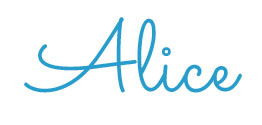Save the Crystal
By Dorothea Farris
The “Coming Clean” theme of this Alice issue provides the opportunity for me to focus on a current issue of concern … the protection of the current status of the Crystal River. A citizen’s committee is currently at work to come clean on the history, the status, the potential future, and the possible Congressional action needed to protect a wild and free flowing river from dams or diversions out of the watershed. Following is a brief explanation of the Save the Crystal project with sincere thanks to Bill Jochems of Redstone, Colorado.
The upper thirty-nine miles of Colorado’s always scenic and partially wild Crystal River is the subject of a citizen’s campaign to keep the river free flowing and free of dams. In the 1950s, a large water conservation district won water court approval to build two dams, one just below Redstone, and one just below Placita which would have created two Reudi-sized storage reservoirs (same cubic feet as the Paonia reservoir), flooding a combined 15 miles of the Crystal River — storage reservoirs that would have filled in the spring runoff and drained to mudflats in the late summer.
These reservoirs were unpopular and uneconomic and were abandoned in water court. But now, more than 60 years after those first filings, western Colorado water is desired even more covetously than in the 1950s. Western Colorado water is taken to the front-range through 26 tunnels, and now supplies three times the population of 1950. Western Colorado water also flows down to supply the lower basin cities of Las Vegas, Los Angeles, and Phoenix whose populations have also increased threefold since 1950. And, now, scientists tell us climate change will reduce the snow we will receive which will impact the need for water in these parts even more.
Western Colorado will soon be in the middle of a tug of war with the front-range cities pulling water east through the divide, and the lower basin sucking water down to its cities. Front range and lower basin users will see western slope storage (dams and reservoirs) as the way to stretch western slope water both east and west. And, that is what this campaign to SAVE THE CRYSTAL is all about. It’s about preserving the upper reach of one stream in western Colorado from the degradation of dams and diversions out of the watershed via very limited application of the federal Wild and Scenic Rivers Act.
In the 1960s, as beautiful Glen Canyon was flooded to become Lake Powell, and dams were proposed even for the Grand Canyon, people began to feel that certain rivers were too valuable as rivers to dam up. The result of this growing sentiment was the federal Wild and Scenic Rivers Act of 1968. Since passage of this law, reaches of 212 rivers have been protected from dams by achieving the designations of wild and scenic. But, so far, no stream in western Colorado has this designation.
So, this campaign to SAVE THE CRYSTAL seeks limited application of this Act to the Crystal River. The only feature of the Wild and Scenic Rivers Act sought for the Crystal River is the prohibition of dams on the main stem of its upper 39 miles. So far, the population of the Crystal valley has been unanimous in its aversion to dams on the main stem, and there has been growing acceptance of a federal enactment that would prohibit dams. Under the Act proposed for designating the Crystal River as wild and scenic, Colorado water law would be unaffected in any other way than the dam limitation. In other words, ranches and farms that currently use the Crystal River for crop irrigation and watering livestock would be unaffected.
Likewise, the local land use authority of Pitkin and Gunnison Counties and the communities of Marble and Carbondale would not be affected. Additionally, water could not be diverted out of the Crystal Valley for other use. Everything else would remain the same; the beautiful status quo will be preserved. The front-range and lower basins will still receive water, but it will not come from the Crystal River, so that we may preserve the pristine, free-flowing beauty we have all enjoyed for many years, and for many years to come. For more information about how to become involved in SAVE THE CRYSTAL, contact: dfarris@sopris.net
Dorothea Farris is a longtime Roaring Fork Valley local. Her many lives have included work as a newspaper editor, a proofreader, a handwriting analyst, a weather reader for the airport, an activist and/or board member for educational, historical, environmental, wildlife, or political agencies and organizations.


great post